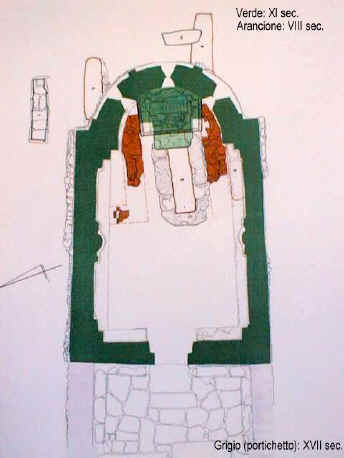Scavenging the Empire

This passage, from Vito Fumagalli's Landscapes of Fear: Perceptions of Nature and the City in the Middle Ages, looks at how Medieval Christians looked at the ruins of the Roman Empire, both physical and spiritual, and used them to make monasteries..
Everywhere towns had decayed and had lost their central position. The ancient world had created a highly sophisticated and essentially urban civilization: the Romans, like the Etruscans before them, had been city builders and the vast and complex network of their towns had had a profound influence on the landscape. ...
Over time, however, the vast reaches of the Roman empire everywhere atrophied. Many towns slowly but inexorably faded away, and economic and social life died as communities became isolated from one another. ... Even agriculture collapsed, and forest, moor and fen began to invade areas which had been cultivated for centuries as city walls and buildings crumbled and squares and open spaces began to be colonized by grass and saplings. ...
By the sixth century vast tracts of country had become wilderness, increasingly desolate and interrupted only by the ruins of churches, towns and villages. Ravaged by decay and war and by invaders eager for booty, these ruins stood awaiting reconsecration or reuse, a task often accomplished by monks, as we shall see. Travellers found the ruins daunting. Sinister and threatening, the abode of evil spirits, they would loom up out of the wasteland or unexpectedly block the path through the forest.
They were the dead cities, the remains of the ancient pagan civilization which Christianity had come to redeem, where the bones of Christians massacred by barbarians and the tombs of martyrs awaited rediscovery and veneration. Strange noises, spine-chilling silences and eerie gleams at night indicated the presence of these martyrs. Occasionally they could be glimpsed, but more usually they stayed hidden below ground or in the undergrowth. In the early Middle Ages these Christian dead seemed to be everywhere, gliding around the ruins of abandoned towns or churches.
They could make phantoms appear, bring about strange happenings or even leave physical traces of their passing. The world around became an extraordinary blend of natural and supernatural, coloured with unaccustomed hues, and the earthly world was felt to be very close to the next. Paradise, for instance, was envisaged as a garden of delights, in a projection of this world on to the next. In the eleventh century the chronicler of the monastery of Novalesa in the Val di Susa near Turin noted that a donation of estates to the monastery had included the site of a Roman town where a number of Christians had been martyred. According to tradition, so many had been slaughtered and so much blood shed that the stones of a river running through the land had oozed blood at the moment when it was given to the monastery. The martyrs' blood was believed to have remained in the ground, hallowing the spot for ever and destining it for monastic ownership.
History





0 Comments:
Post a Comment
<< Home